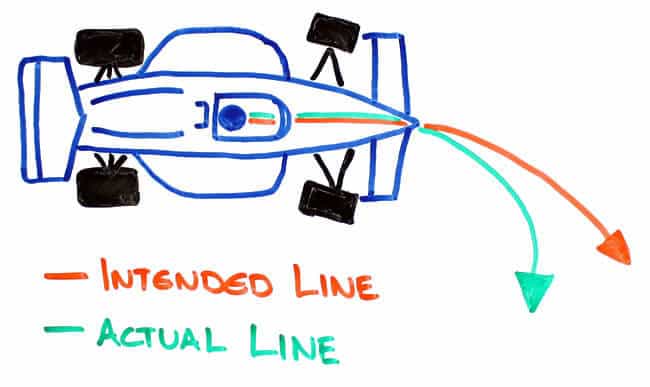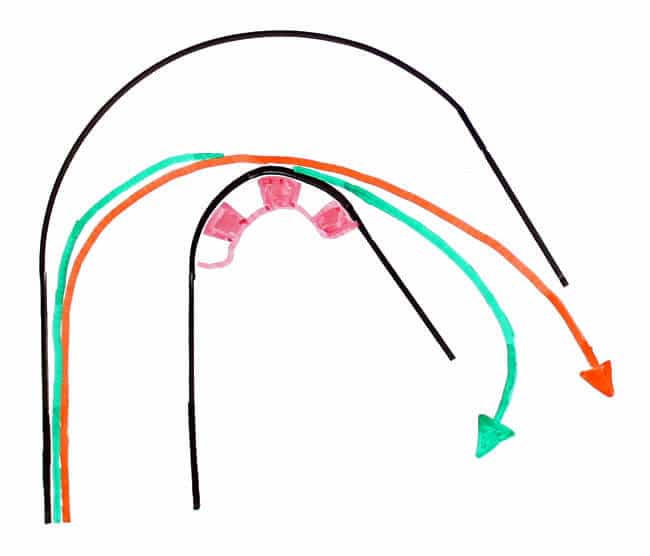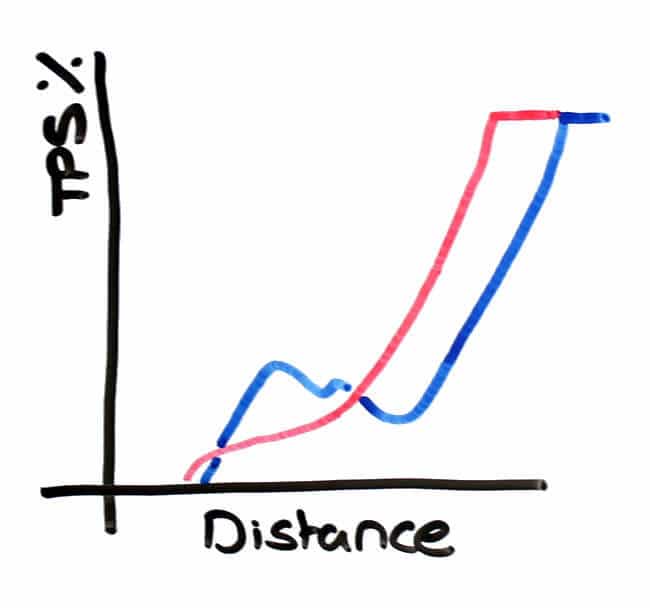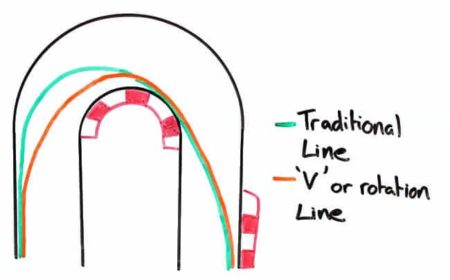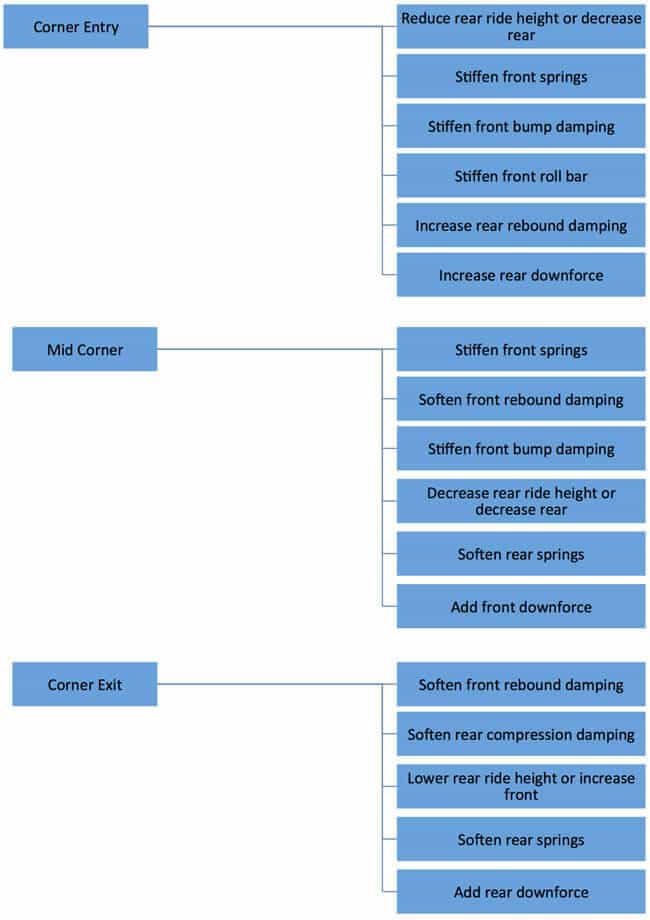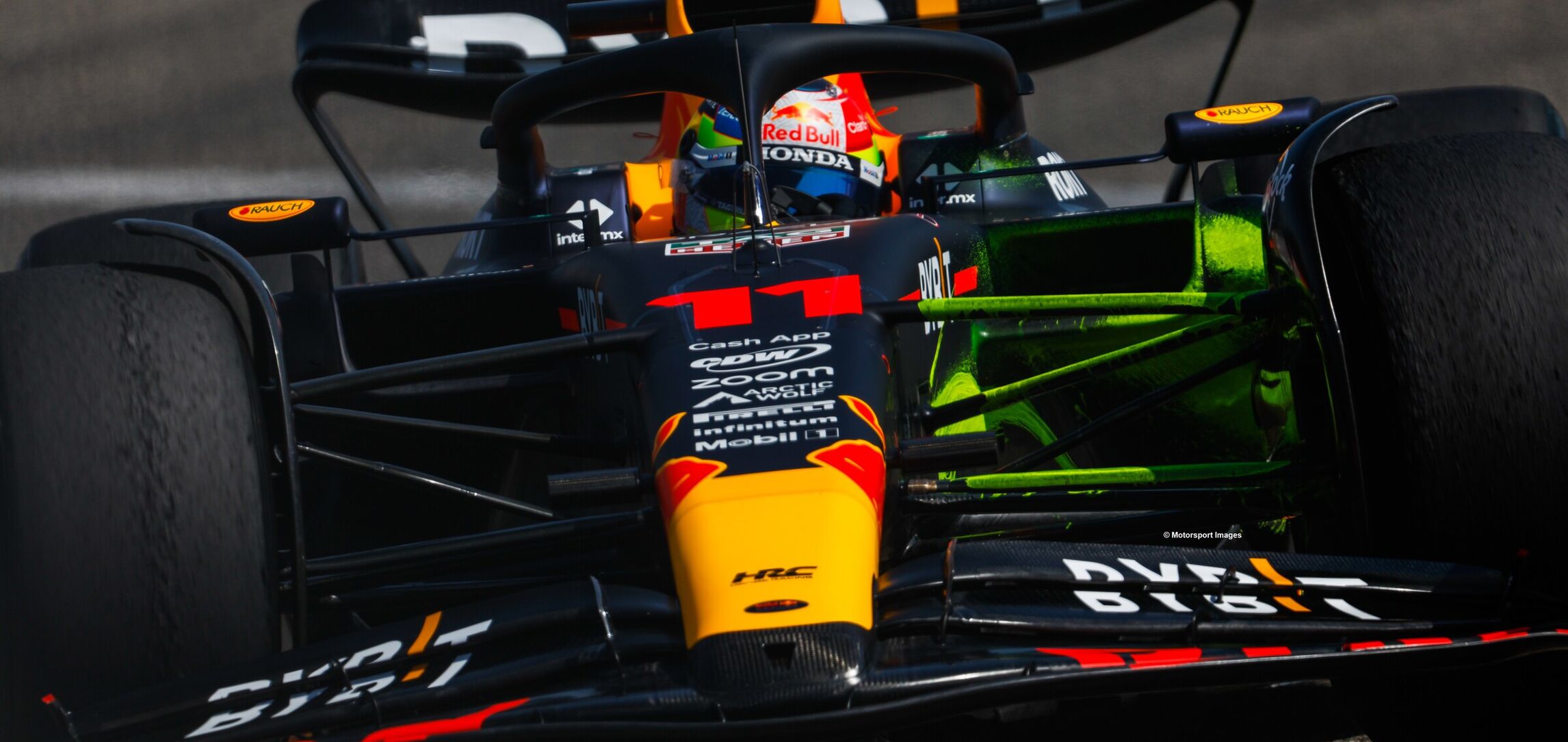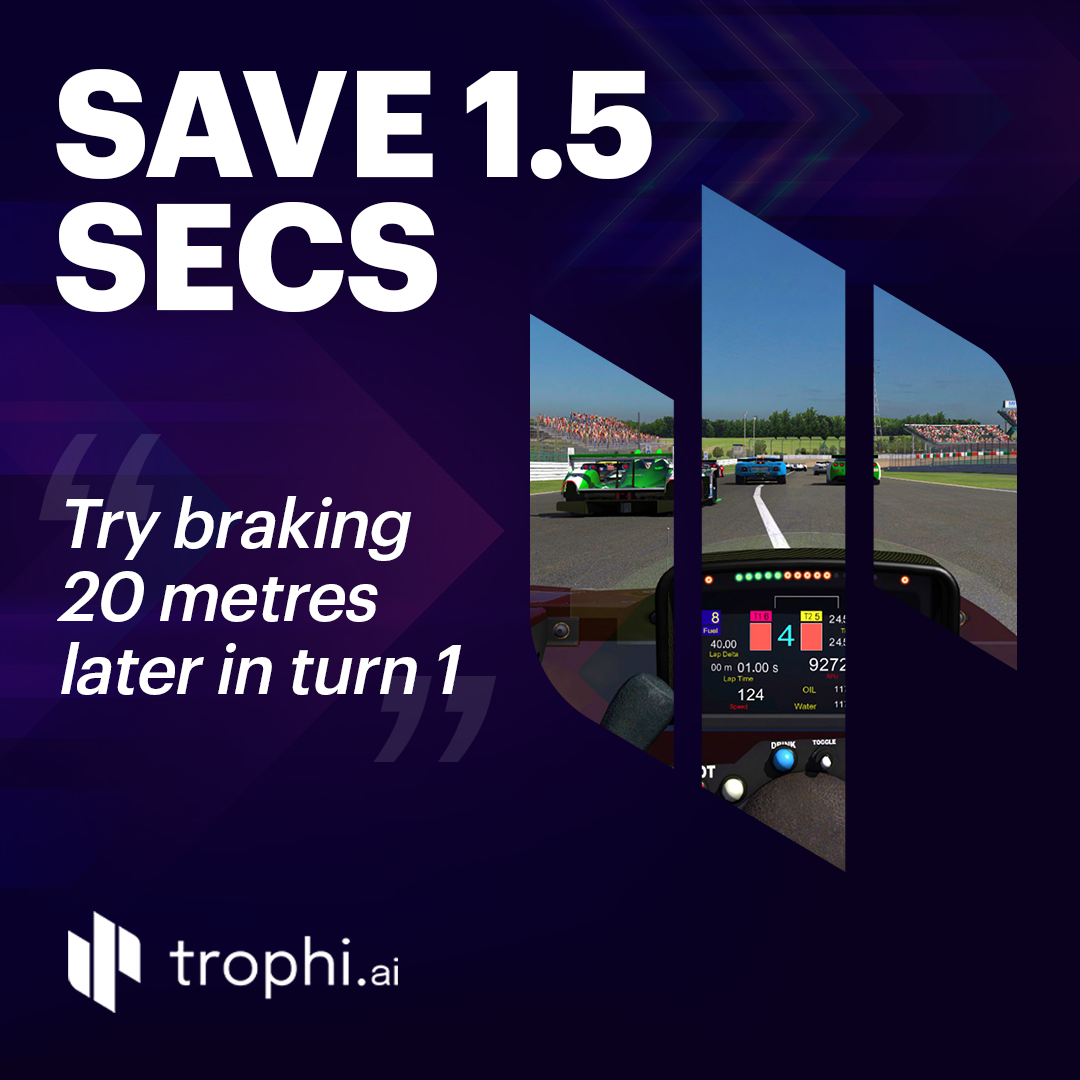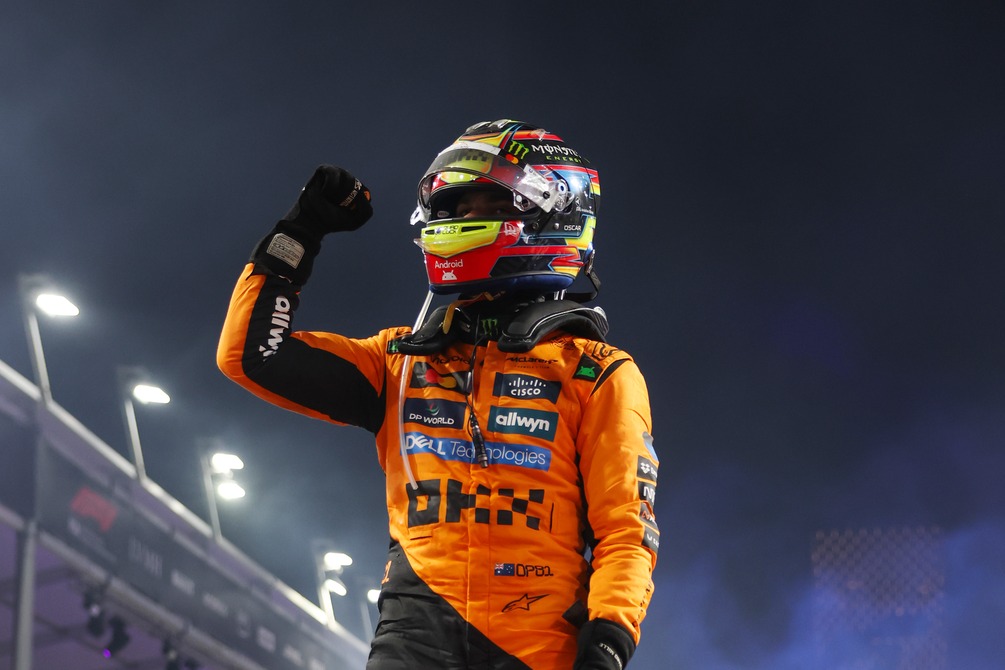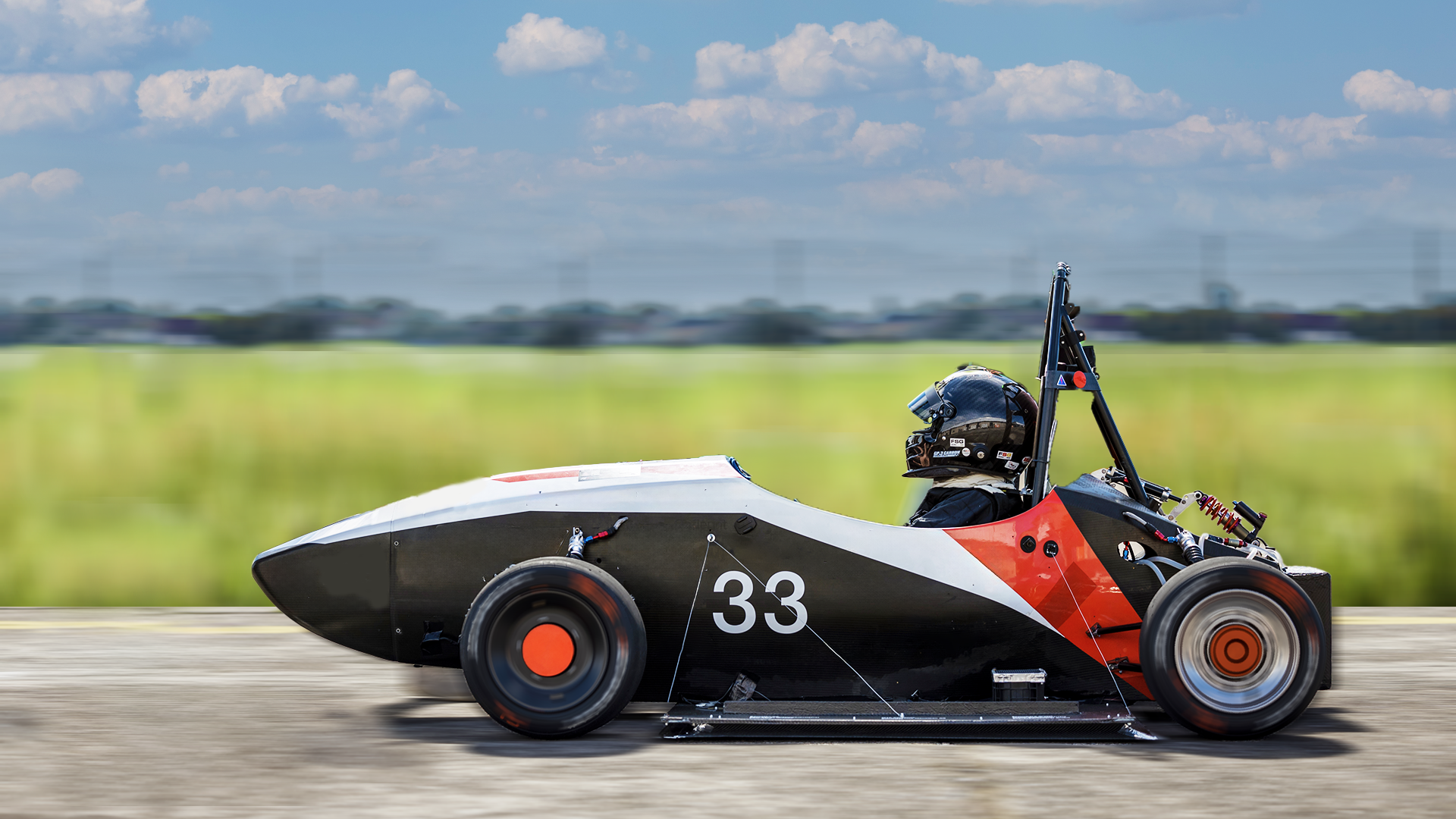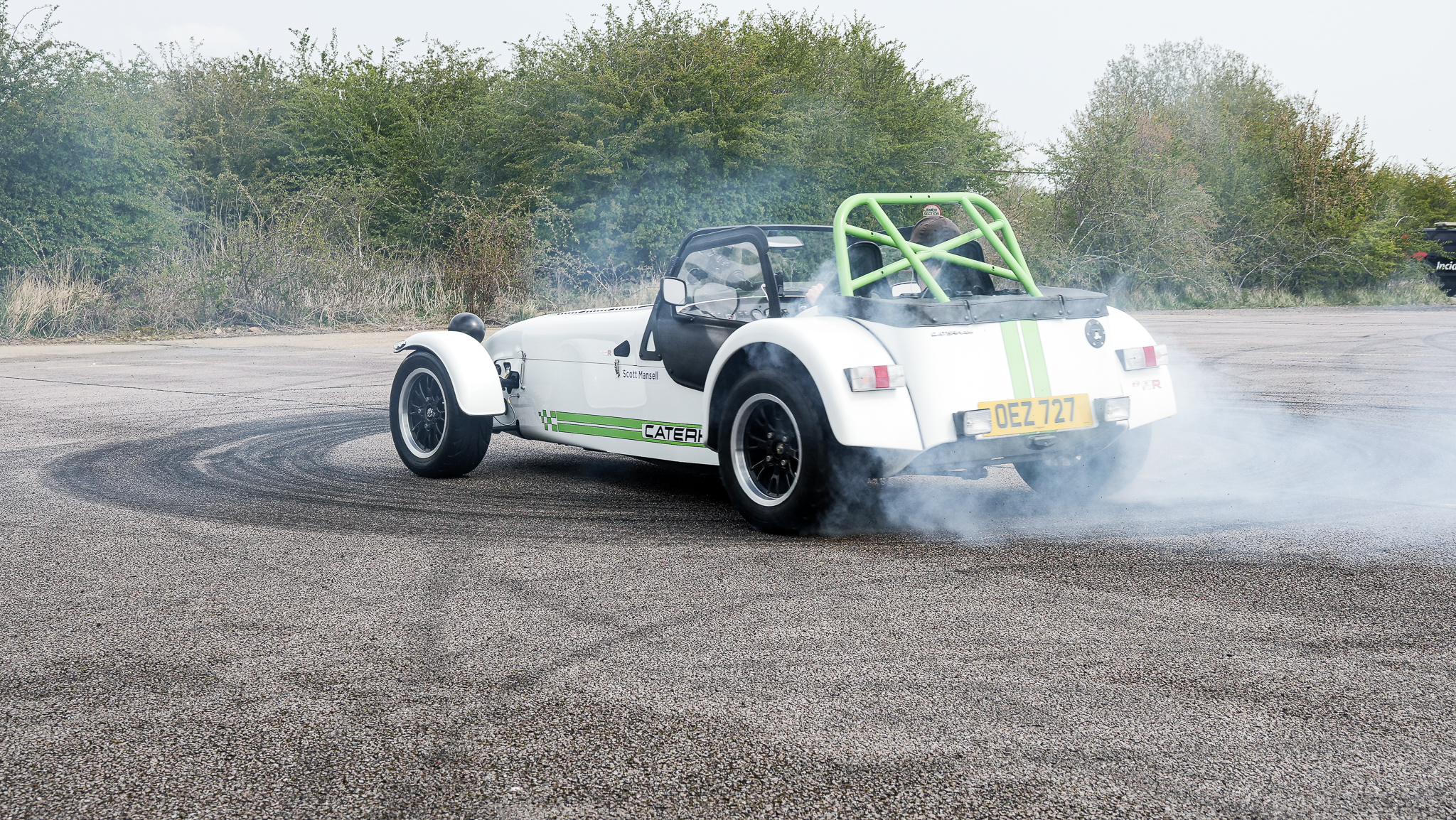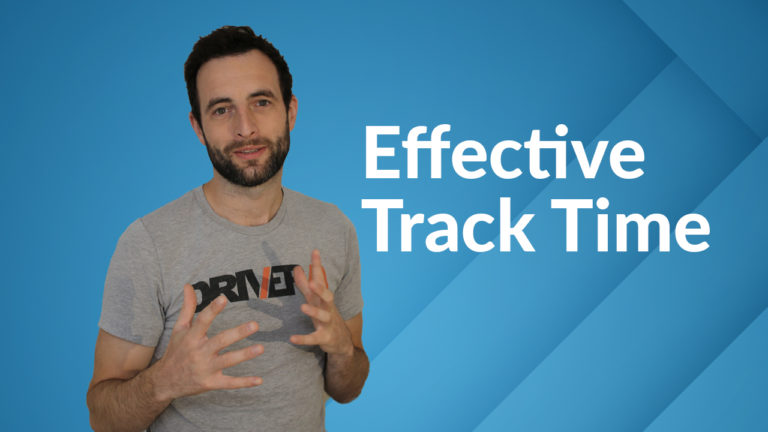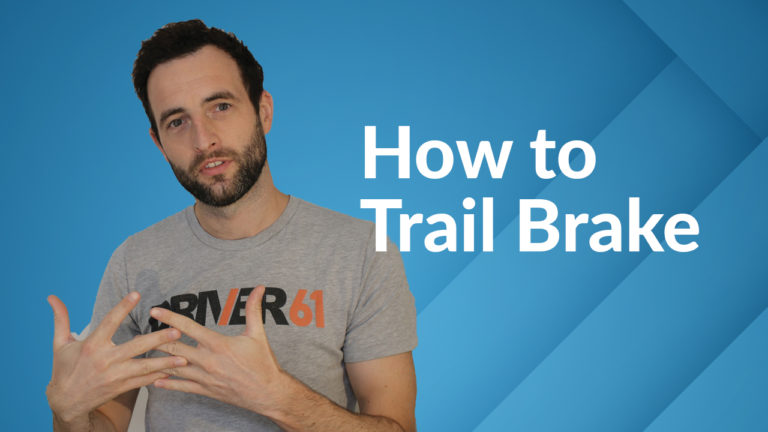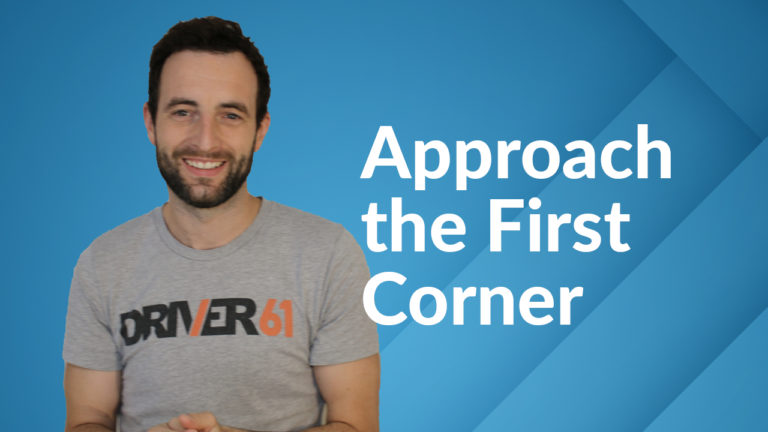What Is Oversteer?

Today we’re examining the handling characteristic of oversteer.
Mostly enjoyed by racers, a little oversteer makes for a fast track car, however, it can be difficult to control and to have too much oversteer can often be referred to as a crash!
Welcome to tutorial eight in our Driver’s University series. In this video whiteboard our professional driver, Scott Mansell, will examine:
- What is oversteer?
- How does oversteer feel?
- The causes of oversteer and how to correct
- Ensuring oversteer is predictable
- Using oversteer to your advantage
- Changing setup
The diagram below shows a car’s racing line when it’s oversteering on a circuit. As you can see, the driver has started to oversteer before the apex and failed to correct the slide, before spinning to the inside of the circuit.
What does oversteer feel like?
When oversteer happens and the rear tyres break traction, it’s quite easy to feel. A driver will sense the movement – the rotation of the car – in their bum and through their body.
When this movement happens, the driver will need to react quite quickly, as if there’s no opposite lock input, the car will likely spin. If the correct amount of opposite lock is applied, the car will continue to oversteer a little through and out of the corner, which is what we’re after.
When a car oversteers, most people have a natural reaction to add opposite lock. With beginners, the reaction can be a little late and the input a too much, but this is to be expected.
With time and more oversteer moments, a driver will begin to predict when oversteer is about to happen – rather than reacting to it.
When I sit next to an amateur for coaching, a lot of the time I know when the car is about to slide a second or so before the driver. This is because of my experience, but the truth is it can be learnt – pretty quickly – if a driver continually drives their car on the edge of grip and has a lot of these small oversteer moments.
What are the causes of oversteer and how to correct them
There are a few things that can cause oversteer in a track car and they can mostly be controlled by how a driver is driving. They include:
- Entering a corner too fast
- Entering a corner while braking too much
- Turning into a corner too violently
- Lifting off the throttle
- Accelerating too hard out of the corner (in a RWD)
- Poor car setup
ENTERING A CORNER TOO FAST
There is a limit to how fast a car can travel through a certain radius. Ask the car to go through a corner above this speed and it will break traction. Depending on the setup of the car, and the drivers technique, the rear of the car can lose traction before the front and cause oversteer.
Correction:
As with all types of oversteer, you must apply opposite lock to try and correct the over-rotation. However, to prevent the oversteer from happening is the first place it’s likely that you’ll have to reduce the entry speed on the following lap. As always, it’s important to be conscious of what is happening with your car, so to use the time on track as efficiently as possible.
ENTERING A CORNER WHILE BRAKING TOO MUCH
I spoke about this in the weight transfer video tutorial but I’ll go over it briefly here again. When a driver brakes the front suspension compresses, transferring weight – and grip – to the front of the car and away front the rear.
This leaves the grip distribution of the car unbalanced and the front with the majority. If the driver turns in with the grip distribution like this, the front will turn in very well, but we will be rear grip limited and the car will likely oversteer.
Correction:
Sometimes it’s difficult to understand whether a driver is entering the corner with too much ambition (speed) or if they are holding the brakes on for too long and leaving the rear of the car with too little grip.
As described in the trail-braking article here, reducing brake pressure as a driver turns into a corner will transfer more grip to the rear of the car and can allow a faster entry. The diagram below shows two separate laps for a driver where they have changed their technique – bled off the brake sooner in the image on the right – and so moved more grip to the rear of the car.
TURNING INTO THE CORNER TOO VIOLENTLY
Much like entering the corner too fast, turning in too violently can create understeer or oversteer – which end slides first will depend on the car’s balance and setup.
Having said that, turning into a corner violently is never good technique and if you do this, you’ll be losing lap time.
If the car has more front grip and a driver turns in sharply, the car will oversteer and it won’t be predictable or smooth. Violent inputs cause violent slides, which are more difficult to catch.
Correction:
If you’ve read all of our articles you should know by now that being smooth is key in being fast. This applies to all aspects of circuit driving, including turn-in.
To ensure your turn-in is smooth, it’s important that your vision is good, which will ensure you know where you want to place your car long before you arrive there and that your racing line will be perfect.
LIFTING OFF THE THROTTLE
‘Lift-off oversteer’ spins and crashes are the most common incidents I see on track days and with amateur racers. Following is the order of what usually happens in this case:
- The driver enters the corner
- They bring the car to the apex and begin to get back on the throttle
- Their vision isn’t far enough ahead, and they begin to run wider than the ideal line
- When they’re almost at the exit, the driver realises they’re too wide and running out of track
- The driver lifts off the accelerator and turns sharper to keep the car on the track
- Due to the increase steering lock and weight transfer the car spins towards the inside wall
Lift off oversteer isn’t a very pleasant type of oversteer, it can often feel quite snappy and it usually happens because a driver is not looking far enough ahead.
Correction:
Good vision and smooth driving are key here – nail these fundamentals and unwanted lift off oversteer will be a thing of the past.
However, sometimes we can use lift-off oversteer to our advantage if we want to manipulate the car to turn or rotate, which we’ll go into later in this article.
ACCELERATING TOO HARD (IN A RWD)
It’s possible to lose traction at the rear of the car by being too violent with your right foot. If a driver is too hard with the accelerator, more so while cornering than in a straight line, the tyres may become overloaded and begin to slide.
As I described in our grip article, there is only so much grip a tyre can give – if you ask too much of it the rubber will inevitably break traction.
Correction:
A smooth throttle input here is critical – especially the initial application to a balanced throttle, the part where the driver is re-engaging the engine. In this phase, it’s crucial to be very smooth. If you feel a ‘jault’ in your backside when you get back on the throttle, you’ve done it too harshly.
The graph below compares two driver’s throttle traces – the red trace is a faster driver and the blue driver a less smooth and slower driver.
You can see the blue driver has tried to get on the throttle too soon and too hard and has then had to lift. The red driver has been more patient and more smooth and has applied the throttle in one movement, which is what we want. The red driver will then carry much more speed down the following straight, reducing their lap time.
POOR CAR SETUP
Having a poorly setup car is always going to cost you time. A good driver can control oversteer, however if you’re not using 100% of both the rear and the front tyre’s grip, you’ll be losing time.
In the case of a poorly setup car that is rear grip limited (oversteery), a driver will be using 100% of the rear tyre’s grip, but less than 100% of the front. Therefore, it would be ideal to alter the setup so the car is more balanced and using 100% of the grip available across all tyres.
As I mentioned in our understeer article, changing setup – or rather improving setup – can be very challenging. You need to ensure your driving is consistent, your feeling and understanding of vehicle dynamics are good and that you can relay this information to a race engineer who can then make the correct setup change.
If you feel like you have a poorly handling car, it may be worthwhile hiring a professional driver and an engineer to help get you a decent base setup. It can help improve a car, both regarding overall grip and possibly, more importantly, driveability.
Ensuring oversteer is predictable
I’ve covered this in some detail already in our Understanding Grip article, so I won’t go into too much detail here.
In simple terms, the smoother your inputs are into the car, the more progressive the slide will be. Imagine trying to push someone over. Push them hard and fast and they’ll fall to the floor with a bang. But, load up pressure on them gently and they may be able to stay standing, or at least fall with some grace.
So, ensure you ‘bleed’ off the brakes, turn-in smoothly and apply the throttle like there’s an egg under your foot and when the oversteer happens it will be much more predictable and easier to control.
Using oversteer to your advantage
Having a well-balanced car at all points through a corner is extremely challenging. Even for professional drivers, myself included, it’s tough to be using 100% of the grip available at all times – although I’m referring to a small amount of over or under driving.
If you watched our weight transfer tutorial you’ll understand how, by shifting weight around, we can change the grip balance of our track cars.
The diagram below shows a long, slow-speed hairpin – think Druids at Brands Hatch. This is what’s happening inside the cockpit:
- The driver brakes into and enters the corner – the car is well balanced
- Throttle is reapplied, smoothly
- The rear of the car squats, and there’s a hint of understeer
- Because the car is in the corner for a long time, the understeer is potentially limiting the exit speed
- As the driver begins to see the exit point, they lift the accelerator somewhat. This causes the weight and grip to transfer to the front of the car
- The car oversteers – ‘rotates’ – slightly, turning itself towards the exit and allows the driver to get to full throttle sooner
Changing setup for oversteer
As I mentioned in the understeer article, we’re going to go into setup in much more detail later in the series, but for the moment I’ll briefly explain how to cure a few basic setup issues that may cause oversteer.
I must warn drivers to be careful when making setup changes to their car, especially if you’re not too experienced. It is incredibly easy to ruin a car’s base setup and end up being completely lost – which certainly isn’t what you want!
The diagram below, explains various types of oversteer and how to potentially cure them.
So that’s all for this article on oversteer – as always if you drive smoothly and are conscious of your technique you’ll continually improve and become a faster, safer and more consistent driver.
Thank you for reading and I’ll see you next time, Scott.

